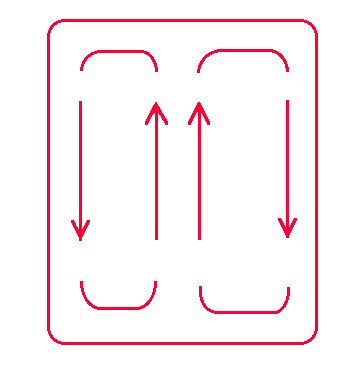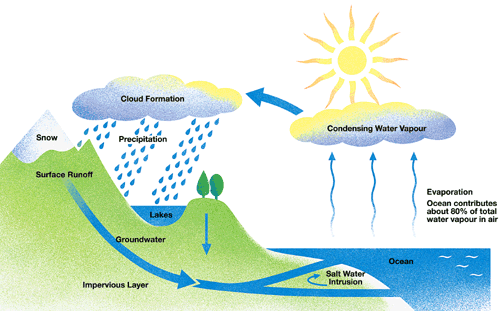11.2 Energy Transfer In The Atmosphere

Energy is one of the most important for every day growth as it affects so many things around us. There are different ways in which energy is transferred in the atmosphere that were covered in the previous course work. Take the quiz below to freshen up your knowledge of how energy is transferred in the atmosphere.
- 1.
Heat is transfered from objects with _____ temperatures to objects with _____ temperatures.
Explanation
Heat is transferred from objects with higher temperatures to objects with lower temperatures. This is due to the principle of thermal equilibrium, which states that heat naturally flows from areas of higher temperature to areas of lower temperature until a state of balance is reached. This transfer of heat occurs through various mechanisms such as conduction, convection, and radiation. Objects with higher temperatures have more thermal energy, and this energy is transferred to objects with lower temperatures until both objects reach the same temperature.Rate this question:
- 2.
The three types of heat transfer are _____, ____, and ____.
Explanation
The three types of heat transfer are conduction, convection, and radiation. Conduction is the transfer of heat through direct contact between objects or substances. Convection is the transfer of heat through the movement of fluids or gases. Radiation is the transfer of heat through electromagnetic waves. These three processes are fundamental in understanding how heat is transferred from one object to another.Rate this question:
- 3.
___ is energy that is transferred in the form of rays or waves.
- A.
Conduction
- B.
Convection
- C.
Radiation
Correct Answer
C. RadiationExplanation
Radiation is the correct answer because it refers to the transfer of energy in the form of rays or waves. Unlike conduction and convection, which involve the transfer of energy through direct contact or movement of particles, radiation does not require a medium and can occur through empty space. Examples of radiation include heat from the sun reaching the Earth, or the emission of electromagnetic waves such as light or radio waves.Rate this question:
-
- 4.
____ is the transfer of energy that occurs when molecules bump into one another (direct touch).
Correct Answer
ConductionExplanation
Conduction is the transfer of energy that occurs when molecules bump into one another through direct touch. In this process, heat is transferred from a region of higher temperature to a region of lower temperature. The molecules in the hotter region have more energy and when they collide with molecules in the cooler region, they transfer some of their energy, causing the cooler molecules to gain energy and increase in temperature. This transfer of energy continues until the temperatures of the two regions become equal.Rate this question:
- 5.
____ is the transfer of heat by the flow of a material.
Correct Answer
ConvectionExplanation
Convection is the transfer of heat by the flow of a material. In convection, heat is transferred through the movement of a fluid, such as air or water. This occurs when the particles in the fluid gain energy, become less dense, and rise, while the cooler particles sink. This creates a continuous circulation of the fluid, transferring heat from one location to another. Convection is commonly observed in everyday life, such as when warm air rises from a heater or when hot water rises in a pot.Rate this question:
- 6.
___ is a term that describes all the waters of the Earth.
- A.
Biosphere
- B.
Hydrosphere
- C.
Water cycle
Correct Answer
B. HydrosphereExplanation
The term "hydrosphere" refers to all the waters of the Earth, including oceans, lakes, rivers, groundwater, and even the water vapor in the atmosphere. It encompasses all forms of water on our planet and plays a crucial role in various Earth processes such as the water cycle, climate regulation, and supporting diverse ecosystems. The hydrosphere is essential for sustaining life and is interconnected with other Earth systems like the atmosphere, lithosphere, and biosphere.Rate this question:
-
- 7.
Label the stages of the water cycle.
- 8.
Why doesn't life exist on Mars or Venus?
- 9.
How does the sun transfer energy to Earth?
- 10.
Describe the steps included in the water cycle. Use the words evaporation, condensation, and precipitation in your answer.
- 11.
What would happen if the balance is tipped toward receiving more energy than it does now?
- 12.
Explain how the water cycle is related to weather patterns and climate.
Quiz Review Timeline +
Our quizzes are rigorously reviewed, monitored and continuously updated by our expert board to maintain accuracy, relevance, and timeliness.
-
Current Version
-
Mar 22, 2023Quiz Edited by
ProProfs Editorial Team -
Sep 09, 2008Quiz Created by
Pvazquez









